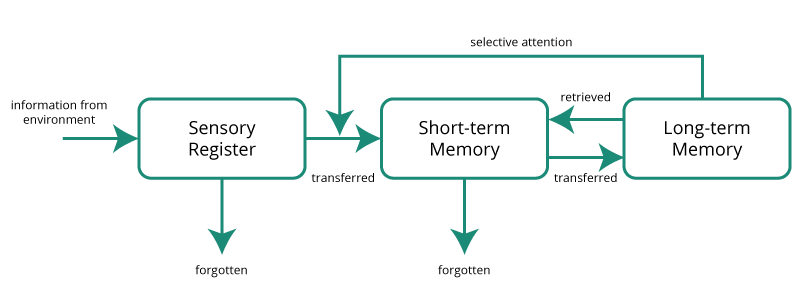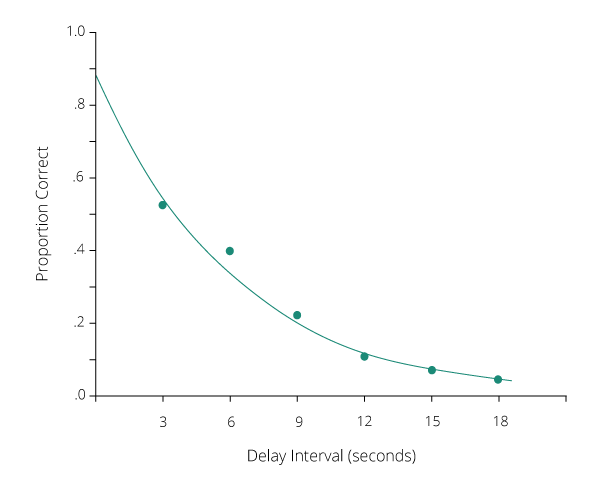2nd process of Memory
Storage (Memory)
Storage is the process by which information is maintained in memory.
Research in psychology has identified three different memory stores:
- Sensory memory
- Short-term memory
- Long-term memory
Collectively, these stores are referred to as the Three Box Model of memory storage.

1. Sensor Memory
Different registers maintain information for different durations:
- Visual information is held within the visual register for approximately ¼ of a second
- Auditory information is held just under 1 second
In rare cases, an individual’s visual register lasts longer than the typical ¼ second. This is called Photographic Memory
2. Short-Term Memory / Working Memory
Some of the information from sensory memory can be transferred to Short-Term or Working Memory for further processing, particularly if it is the focus of our attention.
How short is Short-term memory?
If rehearsal is used, then the information in short-term memory can be maintained indefinitely. As long as you continue to think about the information, you won’t lose it. But once rehearsal ends, then the information will decay from short-term memory in approximately 20 seconds.
You have probably had the experience of trying to remember a phone number long enough to dial it or input it to your contact list. To do so, you likely repeated the number over and over again, a process called Inculcation. Once you had finished using the phone number, you stopped rehearsing it, and shortly after that, you were unable to remember the number again without looking it up.

3. Long-Term Memory
Some of the information from Short-term Memory can be transferred to Long-term Memory, particularly if it has received a deep level of processing.
How long is Long-term memory?
The answer to this question is debatable. Some researchers believe that information in long-term memory is permanent. Once it makes its way into Long-term storage, it’s there forever barring brain damage. Other researchers believe that information in Long-term memory can be lost even in the absence of brain damage.
When information is present in Long-term memory but cannot be retrieved, the information is said to be Inaccessible. When information used to be present in Long-term memory but has since been lost, the information is said to be Unavailable. In either case, the result looks the same: the person cannot remember the information.
Types of Long-Term Memory
Long-term memory can first be divided into Prospective memory (memory to perform actions in the future, like picking up groceries on the way home), and Retrospective memory (memory of the past).
Retrospective memory can be further divided into Declarative and Non-declarative memory. Declarative (or Explicit) memory can be talked about and transferred from one mind to another. Non-declarative (or implicit) memory cannot be transferred from one mind to another simply by talking about it.